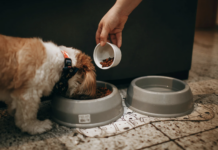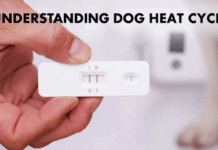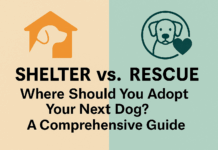Last Updated on June 27, 2024 by Dogs Vets
Dogs are great company for humans, offering companionship a range of life-enriching benefits including reduced stress, improved sleep and increased opportunities to spend more time outside.
However, in some cases their impact on health might be less than ideal. While dogs can be lots of fun, being allergic to them certainly isn’t, but is it possible to have allergies and still own a dog?
Designer Doodles
Recent years have seen an increase in demand for a mix of one pedigree breed with a poodle to create a “doodle”. One example is labradoodles or the St Bernard/poodles at Bernedoodle puppies PA; breeds often thought to be hypoallergenic due to reduced shedding.
Unfortunately sometimes allergic pet owners adopt or purchase “hypoallergenic” breeds, only to find that their allergies are no better. To avoid situations such as these, it’s important to first understand how allergies operate, and what the term “hypoallergenic” really means.
What Is a Hypoallergenic Dog?
The commonly misinterpreted term “hypoallergenic” indicates fewer allergens rather than their complete absence, so while some hypoallergenic breeds can be less triggering, no dog is completely allergen-free.
Another misconception relates to shedding: while some consider fur to be the main source of allergies, it’s what’s underneath that matters most: even in hairless breeds, certain proteins found in the saliva and urine of dogs can stick to dander (dead skin cells), causing allergies.
Reducing Your Risk
Some research suggests those exposed to dogs from childhood may have a reduced risk of developing asthma. Unfortunately if have existing allergies, a furry friend won’t “cure” them – although there are ways to manage your symptoms:
- Opting for a smaller dog (less “surface area”; less dander)
- Brushing your dog outside
- Using hard floors instead of carpets
- Using a HEPA vacuum
- Ventilation, air purifiers and filters
- Regularly changing your HVAC filter
- Allocating “dog-free zones” in the house, if possible
- Regular hand-washing after petting your dog
- Training your dog to not lick you
Some suggest giving your dog weekly baths. However, this risks stripping your dog’s coat of natural oils, which can lead to itching and discomfort. Others may suggest keeping your dog outside, but even with adequate shelter, dogs are still pack animals who need company to feel safe.
Allergy Testing
To determine whether you can live with a dog in your home, your first step is to take an allergic sensitisation test. Up to 80% of people have multiple allergies happening at once, so it’s possible that reducing one of these could help lower the risk of an allergic reaction to a pet.
In addition to standard blood and skin-prick tests, allergen component testing can provide more nuanced details about allergies, for instance a reaction specifically to can f 5 (found in unneutered male dogs), or reduced reactions to certain breeds after 15 to 20 minutes’ exposure.
Treatments
In addition to allergen testing and environmental controls around the home, your doctor may prescribe antihistamines, decongestants, corticosteroids, leukotriene modifiers or immunotherapy, which while lengthy (three to five years on average) can help to lower allergic reactivity.
Ultimately while there is no such thing as a 100% allergen-free dog, there are ways to help reduce the risk of allergies. With some careful research and planning, dog ownership may still be possible, even if it involves the odd sneeze or sniffle.
Fact Check
We strive to provide the latest valuable information for pet lovers with accuracy and fairness. If you would like to add to this post or advertise with us, don’t hesitate to reach us. If you see something that doesn’t look right, contact us!

















